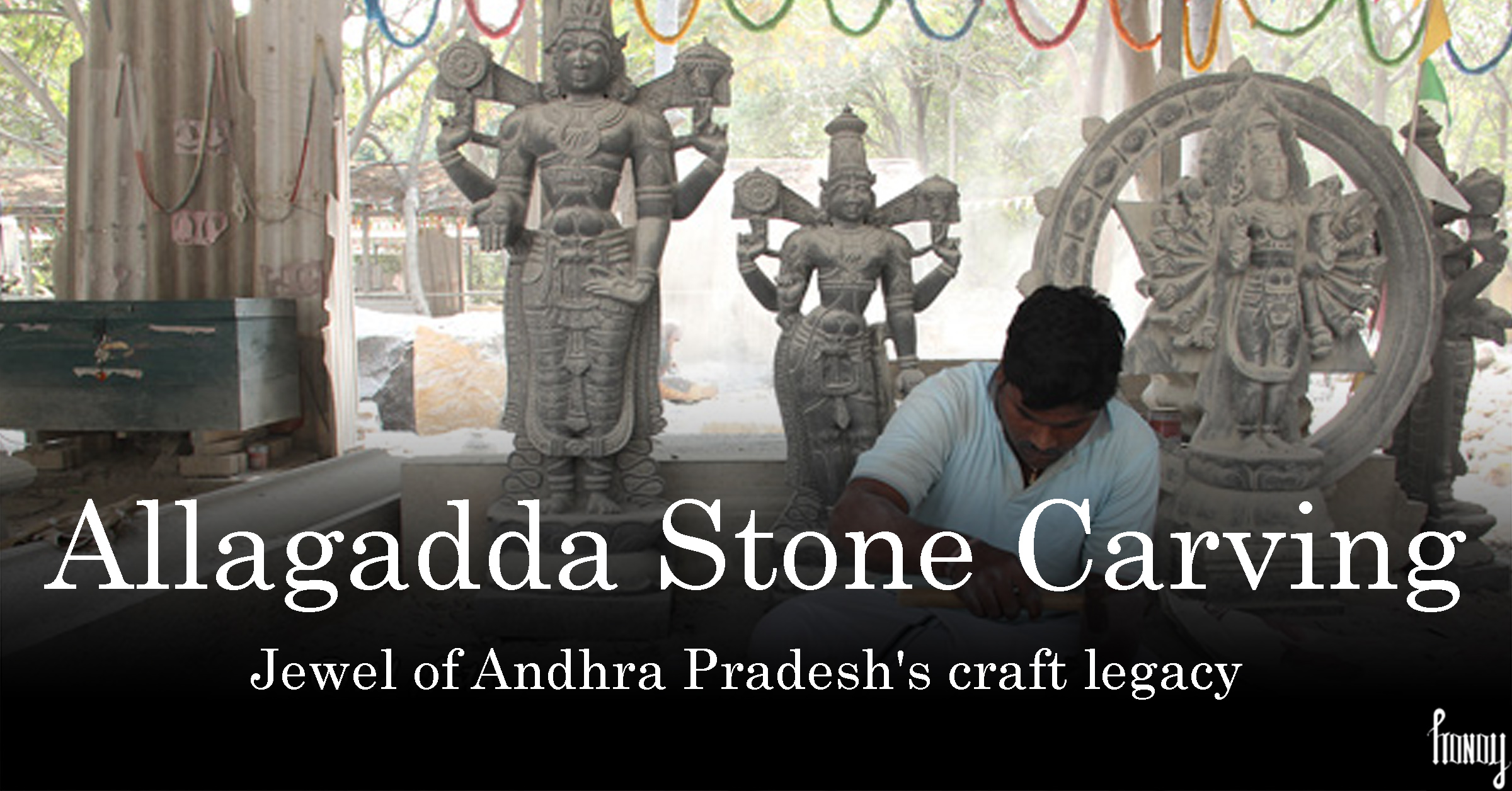Introduction
Nestled in the heart of Andhra Pradesh, India, lies a small town with a remarkable artistic heritage: Allagadda. This unassuming town is renowned for its exquisite stone carvings, a craft that has been passed down through generations. Allagadda stone carving is a testament to the skilled artisans who have dedicated their lives to preserving and evolving this ancient art form. In this blog, we’ll explore the rich history and intricate craftsmanship of Allagadda stone carving.
A Glimpse into History
Allagadda’s stone carving tradition dates back centuries, with its origins lost in the mists of time. Local folklore suggests that the craft was introduced to the region by skilled artisans from the neighboring state of Tamil Nadu. Over the years, it has evolved and integrated influences from various dynasties that ruled the region, including the Cholas, Chalukyas, and Vijayanagara Empire.
Materials and Techniques
The hallmark of Allagadda stone carving is its exquisite detail and precision. Artisans primarily use locally sourced soft stone, known as “sompalli,” which is ideal for carving intricate designs. The process begins with selecting the right piece of stone, considering its size, shape, and texture.
Artisans then use a combination of traditional hand tools and more modern power tools to shape and carve the stone. The designs are meticulously drawn onto the stone’s surface, and then skilled craftsmen use chisels, hammers, and files to bring these designs to life. It’s a labor-intensive process that demands unwavering patience and precision.
Themes and Motifs
Allagadda stone carving is known for its diverse range of themes and motifs. Common designs include intricate floral patterns, mythological figures, religious symbols, and scenes from Hindu epics like the Ramayana and Mahabharata. These designs are not only aesthetically pleasing but also hold cultural and religious significance for the local population.
One of the most iconic motifs in Allagadda stone carving is the depiction of gods and goddesses. These divine figures are carved with utmost devotion, and the attention to detail is astonishing. Each deity is portrayed with specific attributes and gestures that convey their unique significance.
Modern Adaptations
While Allagadda stone carving remains deeply rooted in tradition, it has also adapted to contemporary tastes. Artisans have embraced new tools and techniques to meet the demands of a global market. This fusion of tradition and innovation has allowed the craft to thrive and reach a wider audience.
The Future of Allagadda Stone Carving
Despite the challenges posed by modernization and changing consumer preferences, Allagadda stone carving continues to flourish. Government support and initiatives aimed at preserving traditional crafts have provided a lifeline to the artisans of Allagadda. Additionally, efforts to promote tourism in the region have helped showcase the art to a broader audience. Pioneers like M. Rajesh showcase intricate designs on stone, seamlessly blending tradition with innovation. Their creations, often inspired by mythology and nature, contribute to the evolving landscape of this traditional craft, gaining recognition for its artistic and cultural significance.
Conclusion
Allagadda stone carving is a timeless craft that reflects the rich cultural heritage of Andhra Pradesh. Its intricate designs, rooted in tradition, continue to captivate art enthusiasts and collectors alike. The dedication of the skilled artisans in preserving and evolving this ancient art form is a testament to the enduring beauty of Allagadda stone carving. As long as there are artisans willing to carry forward this legacy, the town of Allagadda will remain a hub of artistic excellence, where stones come to life with stories carved in exquisite detail. And as dedicated lovers of Indian crafts, we should support this heritage of ours. Please leave in comments your suggestions on this blog and how I can improve it.




























